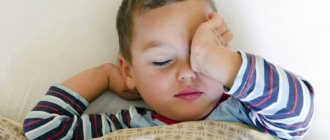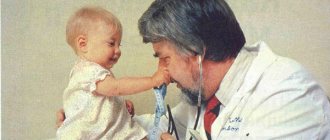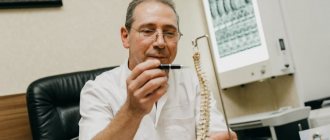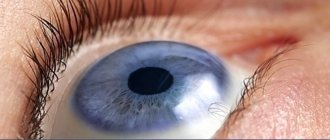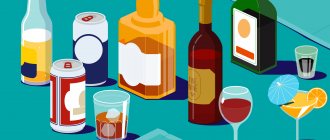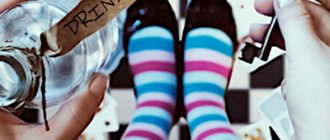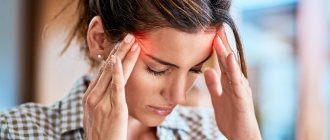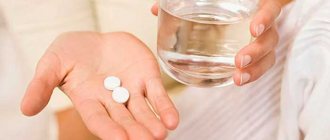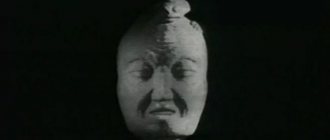Useful articles
Many people mistakenly believe that migraine is a disease of adults, but as practice shows, it occurs among children and adolescents. The difficulty lies in the fact that it can be quite difficult to diagnose migraine in adolescents in a timely manner and, accordingly, treat it adequately. In reality, this disease greatly worsens the child’s quality of life and causes him constant discomfort, both physical and psychological.
Causes
During adolescence, migraines can develop as a result of the following factors:
- lack of sleep;
- hormonal imbalance;
- menarche in girls;
- music too loud;
- overwork of the body, both physical and mental;
- stress;
- acclimatization to new conditions;
- spending long periods of time in front of a computer monitor;
- very bright light;
- poor nutrition;
- smoking;
- drinking alcohol;
- taking certain medications;
- long journey.
Causes of headaches in children
The prerequisites for the development of migraine are the following provoking factors:
- excessive or insufficient sleep;
- changes in barometric pressure and weather;
- psychological and physical fatigue;
- overstrain of the visual organs from watching TV or from prolonged work at the computer;
- negative emotions;
- consumption of foods with excessive amounts of tyramine (sweets, nuts, citrus fruits, chocolate, cheese, smoked meats, eggs);
- hereditary predisposition;
- heat and stuffiness;
- certain medications;
- some odors;
- driving;
- bad habits.
Migraine symptoms in teenagers
Migraines are often observed in those children who are determined, ambitious, and have an active lifestyle. Signs of migraine in a teenager that requires immediate treatment may include:
- splitting pain in the head, which can be localized in the temples, frontal lobe, eyes, one half of the skull;
- lack of strength;
- nausea;
- general weakness in the body;
- vomit.
The duration of the attack varies: from one hour to several days, which is why the teenager’s well-being suffers greatly. During periods of pain, the child takes his head with his hands and bends away from it. Usually, for migraines, simple analgesics do not give the expected effect.
Treatment
To identify external factors that provoke migraine pain, it is advisable to keep a notebook in which either the teenager himself or his parents should write down the nature of the headache, accompanying symptoms and events preceding the attack. When identifying provoking factors, a teenager should try to avoid them.
If an attack does begin, then usually the patient at the first symptoms is advised to take headache medicine prescribed by the doctor and retire to a quiet, darkened room. As a rule, such measures are enough to stop the attack.
Parents of a teenager must inform teachers and school health workers that their child has been diagnosed with migraine.
Perhaps the doctor will prescribe medications for the teenager to improve cerebral circulation.
In some patients, migraine stops on its own without apparent cause and the patient does not experience attacks for a long time.
Clinical Brain Institute Rating: 3/5 — 4 votes
Share article on social networks
There are several types of migraine in teenagers:
- with ophthalmoplegia, when the functioning of the eye muscles is disrupted (dilated pupils, blepharoptosis);
- simple - manifested by sharp or increasing pain, intensifies with movement, accompanied by abdominal pain, muscle tension, the desire to hide from the light source, vomiting;
- basilar – characterized by speech and coordination disorders, vomiting, blurred vision, dizziness (usually occurs in girls during puberty);
- with aura - this is a migraine, in which typical signs first appear (flashes of light, spots before the eyes, sensation of smells), and after them, after 30-60 minutes, an attack of pain begins;
- with hemiparesis - this migraine is accompanied by impaired motor and speech functions, muscle weakness, clumsiness, and there may be a visual aura.
Migraine symptoms
It is impossible to determine headaches in children by measuring blood pressure or temperature, since during an attack these indicators remain normal. The test results do not show any abnormalities. An in-depth examination of the body systems and internal organs is also unable to reveal any changes. The disease is characterized by general malaise.
The main manifestations of childhood migraine include:
- pain is localized on one side of the head;
- presence of nausea, vomiting;
- speech and vision impairment;
- increased sensitivity to light;
- dizziness;
- "goosebumps" on the skin, flickering "flies" before the eyes.
Treatment of migraine in adolescents
This disease is quite difficult for adults, and even more so for children. It is important that parents are interested in the child’s treatment and are actively involved in the therapy process. This will help avoid such negative consequences of the disease for adolescents as: complexes, decreased performance and self-esteem, and self-isolation.
Important: Treatment of migraine in adolescents must begin at the first signs of the disease, and this should only be done under the supervision of a doctor! Specialists will not only select the necessary medications, but will also tell you in detail how to live with this disease, because it has a predominantly chronic course and requires patience and consistency in the activities carried out. During an attack, the child should take the prescribed pills, lie down, close the curtains in the room, open the window, apply a wet compress to the head or massage and try to sleep, since the migraine usually goes away after sleep. In your diet, you should limit the consumption of foods such as canned food, sausages, chocolate, sweets, etc., replacing them with fresh vegetables, fruits, lean meat and fish, milk, kefir, and yogurt. In some cases, acupuncture and working with a psychotherapist have a good effect. It is not uncommon for migraines to go away on their own after age 20, but this is not always the case. You need to learn to live with it and behave correctly during attacks in order to almost completely neutralize their impact on your general condition. The doctors at Alkoklinika will certainly help you with this.
The text was checked by expert doctors: Head of the socio-psychological service of the Alkoklinik MC, psychologist Yu.P. Baranova, L.A. Serova, a psychiatrist-narcologist.
CAN'T FIND THE ANSWER?
Consult a specialist
Or call: +7 (495) 798-30-80
Call! We work around the clock!
Why is migraine dangerous?
Headaches themselves are quite difficult for a child: he cannot perform normal activities - walk, study, do creative work. Attacks of excruciating pain put him to bed for a long time, giving neither him nor his parents peace. The child asks for help, cries, but nothing helps him. More dangerous conditions and diseases can be hidden under the headache, while the diagnosis of migraine itself is established in the first couple of months of attacks in no more than 10% of cases. Many parents themselves unsuccessfully treat their children, triggering and significantly complicating the disease even further.
Children's headache is not a harmless disease that periodically arises and passes. It can result in depression or serious consequences, one of which is migraine status. This is a rather painful and prolonged attack of headache or a gradually occurring paroxysmal pain that continues and progresses for several days. The attacks become uncontrollable, no medications help. As a result of constant vomiting, which dehydrates the body, the condition worsens significantly.
The dilation of cerebral vessels causes a strong filling of the cerebral vessels with blood, which causes cerebral edema and oxygen deficiency. The result is an increase in intracranial pressure, which can cause loss of consciousness and seizures.
Another serious complication of migraine is a stroke of migraine origin. Such an attack begins as a simple headache with or without an aura, but then awkwardness and weakness appear in the leg and arm. The attack passes, but paralysis and paresis, along with gait disturbances, choking while eating, slurred speech and double vision remain.
An MRI examination can detect damaged and dead areas of brain tissue with impaired blood flow in the area of hemorrhage. Such damage is restored within a couple of months, but cysts can last a lifetime.
Why do children get migraines?
The most important cause of migraines is considered to be a computer, or rather, a long period of time in front of its monitor. If this is also added to by watching TV for a long time, then even the nerves of an adult cannot stand it, not to mention a child. Stressful situations in families are also among the causes of migraine. Parents must remember that their squabbles and quarrels should not affect the psyche of their children. Very often, children have problems at school that he keeps to himself, so you should talk to your child about everything that worries him. Another harmful factor that causes migraines in children is the foods they eat. A child may, without knowing it, have something that his body cannot tolerate. Therefore, if migraine attacks appear after eating, you need to reconsider your diet.
A child has a migraine attack: what to do?
When an attack occurs, the child must be placed in a horizontal position. It is better to darken the windows in the room, turn off light and sound sources, and also provide fresh air. In case of severe nausea, it is advisable to relieve the condition by inducing vomiting. During an attack, sweet tea and sleep will be helpful.
In addition to undergoing a course of osteopathic treatment for childhood migraines, parents should follow several simple recommendations that will help reduce the risk of developing new attacks in their child:
- do not limit the child’s contacts with peers and other people;
- Explain to the child what the disease is;
- maintain a daily routine;
- exclude (or reduce to a minimum) foods such as salty foods, preservatives, chocolate, citrus fruits, nuts from the child’s diet;
- avoid excessive loads;
- limit the child’s presence near the computer;
- replace medications that can cause an attack;
- use personal hygiene products without fragrances;
- If a child has bad habits, try to rid him of them.
